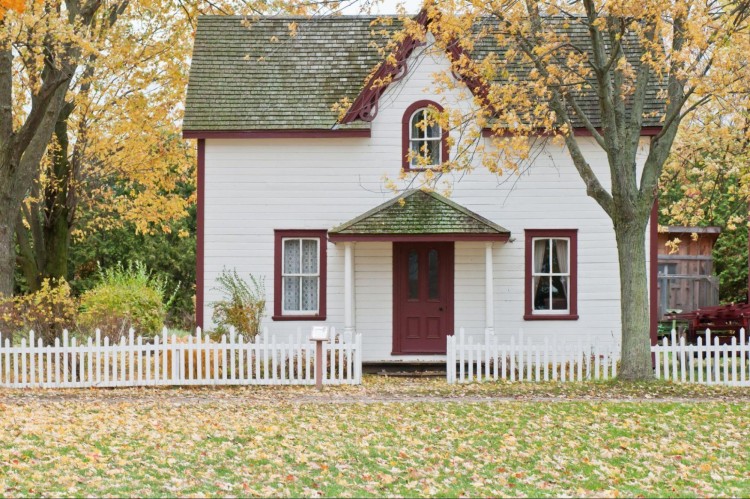You were looking for your perfect home, and you’ve finally got one. You’re about to buy it. But wait! You still have some work to do! Have you considered inspecting the house? If not, it’s high time that you consider doing it yourself and by a home inspector.
Confused about where you need to start? Don’t worry. You can consider this home inspection checklist before you buy a home.
Don’t be a no-hassle, easy-going buyer! Make sure that you get a good deal out of it.
The Interior of the House
The interior of the house is from where you should start your inspection. You may see how things are looking from the top, but a home inspector will be able to look deeper to find any issue with the house that you or the seller has to solve first.
Here’s a checklist of things that you must examine with the home interior:
1. Heating System
Check what type of heating system the house uses- in-floor radiant, hydronic system, solar heater, electric space heater, hybrid heater, or something else.
Besides the home heating system, check whether the water heaters are working well while buying the home. Check whether the water heater is leaking from the top or bottom, whether it’s just condensation or there’s actually a pool of water on the ground.
Inspect for the maintenance and replacement dates. Did the previous owners maintain them well? Do they have replacement dates? Were they replaced, or are they still in use? Consider all these things in your checklist.
2. Air Conditioning System
When checking the heating systems around the house, examine the central air conditioning system thoroughly. See if it’s cleaned and properly maintained.
If there’s a warranty or replacement date, review the papers to see whether parts were replaced or not.
Also, test how well the air conditioning system works. See how cool it makes the house and how fast it does so. Besides, look for leaks in or around the home when you turn on the air conditioning system.
Examining this can take anywhere between one to a few hours. Run the system while checking other parts mentioned in the checklist. After you’re done, come back to see how it performs and what issues it has.
3. Electrical Wirings and Appliances
If the previous owners have installed electrical appliances in the house and didn’t take them off, then switch them all on for a while to see whether they’re in good condition.
Check if you can hear any weird humming or buzzing noise or get a burning smell. If so, immediately ask an expert to inspect where the source is.
Besides, examine how the wiring is around the entire house. See if it’s connected well enough to save you some electricity bill and if there’s any burning smell, melted fuse, or any tear in the wires.
4. Plumbing Lines
Plumbing lines are everywhere in the house- in the kitchen, the bathrooms, behind the walls, and even under the floors. Turn the water supply on, turn on all the faucets and keep the water running. If there are faults in the plumbing lines, you’ll notice water leaking and pooling on the floor.
You may not need to go to this extent. Water can leave stains on a spot they have been leaking on for a long time. You can detect problems from the surface once you notice something like this.
5. Ventilation System
The kitchen, bathrooms, attic, and basement are the places that must have a sound ventilation system. Bathrooms should be well ventilated to keep them dry and free of smell. Kitchens need ventilation to help the excess heat, odor, smoke, and gas leakage to escape properly.
Basements and attics must use a combination of exhaust and intake ventilation. These areas trap the most moisture that can cause molds and other damage as they’re closed most of the time. Good airflow will ensure the optimum condition in these closed spaces.
6. Bathrooms and Kitchen
Bathrooms and kitchens have all types of sources for faulty conditions in a house, especially a kitchen. They have plumbing lines, electrical connections, and appliances. The kitchen also has gas connections and is the first place for any fire hazard.
Check if the wires, appliances, and plumbing lines are in good condition, and inspect for any leak in the gas pipes. Besides, see how good the ventilation systems are, how well-maintained they are, and if they need replacements.
7. Attic and Basement
A thorough check-up of the attic and basement must be on your home inspection checklist.
The basement and attic can accumulate harmful gases over the years if there isn’t any proper ventilation. These gases can cause harm not just to the house but also to your health. They can also have leaks and rodents infestations. If they’re made of wood, they can have damaged wooding.
Check the condition of the attic and the basement. See how their walls and floors are, if there are damages, be it water damage or pest and rodent damage, how well-ventilated the areas are, and if the wirings and plumbing lines have been well-maintained.
8. Flooring and Ceiling
The flooring and the ceiling may show signs of aging. The paint may start chipping off, and the cement can start earring off, the walls may have molds from water damage, or the floor may have some damage due to something heavy.
Thoroughly inspect the floor and the ceiling for signs of damage or anything that says these need some improvement. Remember, the flooring can affect the property value quite considerably.
9. Any Smell
Keep your senses open when inspecting your soon-to-be home. Most of the basic problems around a house can be detected through smell first.
See if you can smell anything burning, rotten, or moldy, or whether it smells like a gas leak anywhere. Follow where your nose takes you, and you may find the source of the smell.
Besides, inspect the fuse box, the primary gas source, and the water supply to see if there’s any smell in those spots.
The Exterior of the House
Now that you’re done inspecting the interior of the house, here’s a checklist of what you should check on the exterior of the home.
1. Quality of the Foundation
The foundation of the house is the very first thing you should check when inspecting the home. A strong foundation will have the house sitting strong on the ground. It’s better to ask a foundation repair contractor to examine how good the foundation quality is.
You can try to understand the foundation quality as well. Check for cracks on the exterior of the walls of the house, and see whether the house is straight or slightly bulging, or leaning towards a side.
Remember, a home with a good foundation will have the foundation wall and the home walls appropriately leveled. Otherwise, it will sacrifice the house’s structural integrity.
2. Roof
See how the roof is. See if there are plants sprouting, weeds, or algae on the roof. Check for any chips, holes, or other damages that may create leakage in the future. Also, your attic is also a part of the roof, so inspect that from the outside thoroughly as well.
If the roof has shingles installed, check for missing or damaged shingles. Besides, see if the roof deck is sunken or if there’s any damage to the flashing.
3. Rain Gutter and Downpipes
Rain gutter and downpipes should always be clean. Check what the materials of the gutter and pipes are, if there are clogs and debris in the gutter and if the downpipes have holes, dents, or other damages that can risk the integrity of the drainage system.
Clogs, wear, and holes may look innocent from the surface, but they can cause issues inside the house as well.
4. Windows and Doors
You can check them from the inside as well, but it’s a good idea to inspect the doors and windows from the outside, as the external environment has the most effect on them.
Check the structural integrity of the windows and doors, if there are cracks or bulges, if the screws are in place properly, and any other damage that the naked eyes can find.
If the doors or windows are damaged, then replacing them is one of the ways to spruce up the exterior look of the house.
Who Should Pay for the Inspection and Repairs?
This is a debatable topic. Mostly, the buyer has to pay for a professional home inspection since they’re interested in buying the property. However, some buyers can negotiate to make the seller pay for the entire examination.
As for the repairs, it’s the seller’s job to do it as they’re selling the place, and it should be in good, usable shape for the buyer. It’ll also appreciate the value of the house.
Conclusion
It doesn’t matter how much interested you are in a particular property and how much you want the keys to it. You should never let go of a home inspection by a professional.
This inspection is in your best interest, as it’ll save you from costly outcomes in the near future.
We hope you find this checklist for a home inspection helpful and will use this whenever a house interests you.




